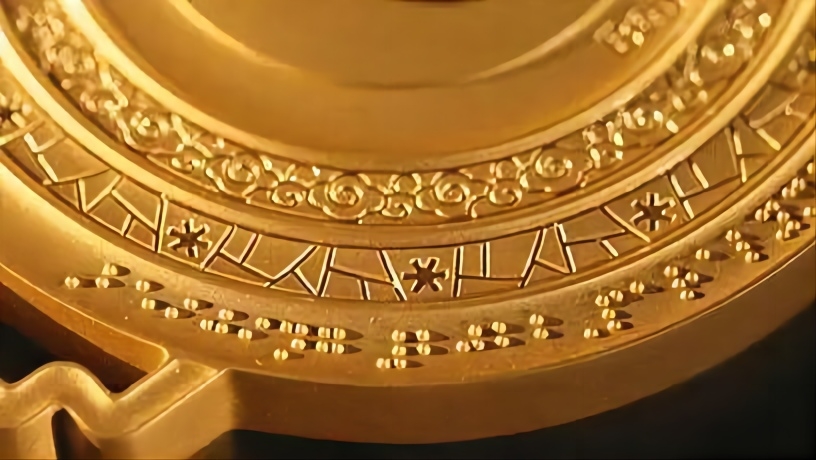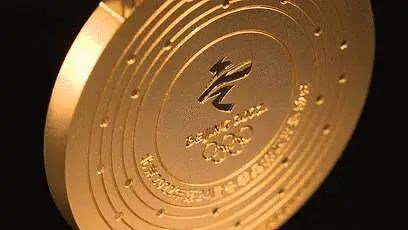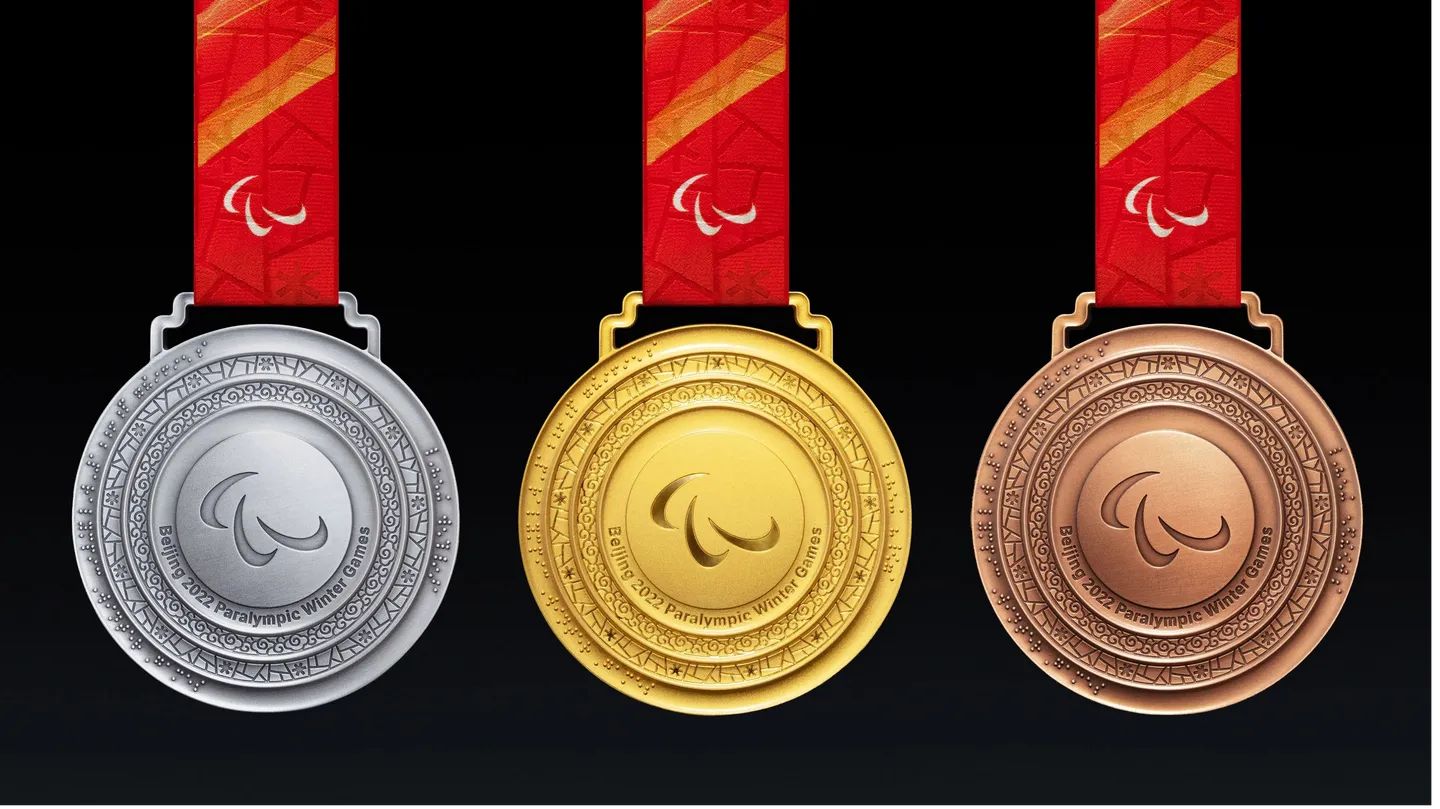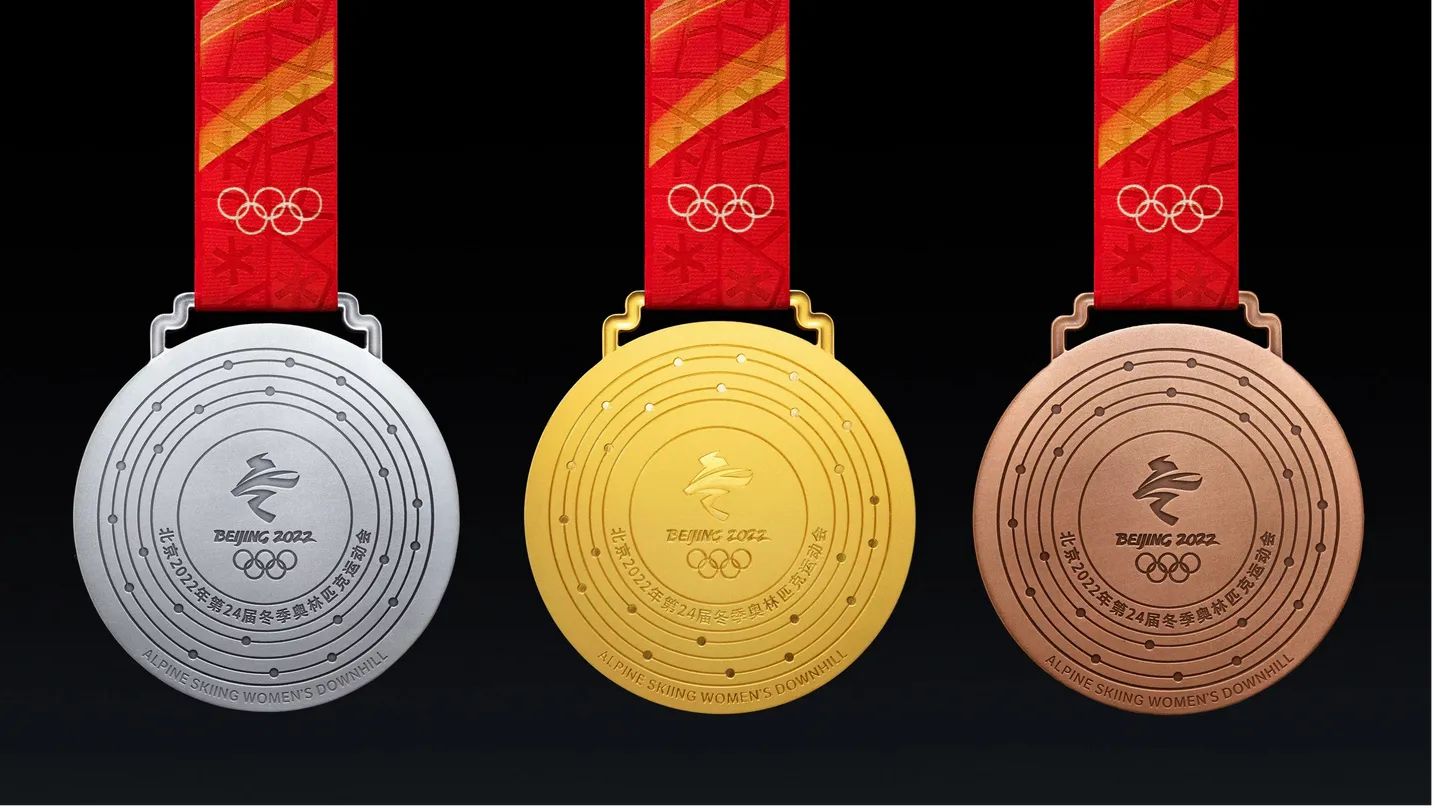The Beijing Winter Olympics medal "Tongxin" is a symbol of China's manufacturing achievements. Different teams, companies, and suppliers worked together to produce this medal, giving full play to the spirit of craftsmanship and technology accumulation to polish this Olympic medal that combines elegance and reliability.

animated cover
1. Adopt 8 processes and 20 quality inspections
The ring on the front of the medal is inspired by the ice and snow track. Two of the rings are engraved with ice and snow patterns and auspicious cloud patterns, with the Olympic five-ring logo in the center.
The ring on the back is presented in the form of a star track diagram. The 24 stars represent the 24th Winter Olympics, and the center is the symbol of the Beijing Winter Olympics.
The medal production process is very strict, including 18 processes and 20 quality inspections. Among them, the carving process particularly tests the level of the manufacturer. The neat five-ring logo and the rich lines of ice and snow patterns and auspicious cloud patterns are all done by hand.
The circular concave effect on the front of the medal adopts the "dimple" process. This is a traditional craft that was first seen in the production of jade in prehistoric times. It produces grooves by grinding on the surface of the object for a long time.
2. Green paint creates “small medals, big technology”
The Beijing Winter Olympics medals use water-based silane-modified polyurethane coating, which has good transparency, strong adhesion, and highly restores the color of the material itself. At the same time, it has sufficient hardness, good scratch resistance, and strong anti-rust ability, and fully plays the role of protecting the medals. . In addition, it has the environmental characteristics of low VOC, colorless and odorless, does not contain heavy metals, and is in line with the concept of Green Winter Olympics.
After the medal production company changed the 120-mesh emery to the finer-grained 240-mesh emery, Sankeshu Research Institute also repeatedly screened matting materials for the medal paint and optimized the gloss of the paint to make the medal surface more delicate and the texture details more detailed. outstanding.
3TREES also clarified and quantified the details of the coating process and optimized parameters such as construction viscosity, flash drying time, drying temperature, drying time, and dry film thickness to ensure that the medals are green, environmentally friendly, highly transparent, and have good texture. Delicate, good wear resistance, long-lasting and non-fading properties.
animated cover
animated cover
3. The secret of medals and ribbons
Usually the main material of Olympic medal ribbons is polyester chemical fiber. The Beijing Olympic medal ribbons are made of mulberry silk, accounting for 38% of the ribbon material. The Beijing Winter Olympics medal ribbons go a step further, reaching "100% silk", and using the "weaving first and then printing" process, the ribbons are equipped with exquisite "ice and snow patterns".
The ribbon is made of five-piece Sangbo satin with a thickness of 24 cubic meters. During the production process, the warp and weft threads of the ribbon are specially treated to reduce the shrinkage rate of the ribbon, allowing it to withstand rigorous tests in fastness tests, abrasion resistance tests and fracture tests. For example, in terms of anti-breakage, the ribbon can hold 90 kilograms of items without breaking.


Post time: Dec-19-2023

